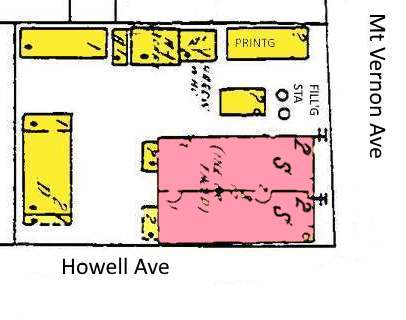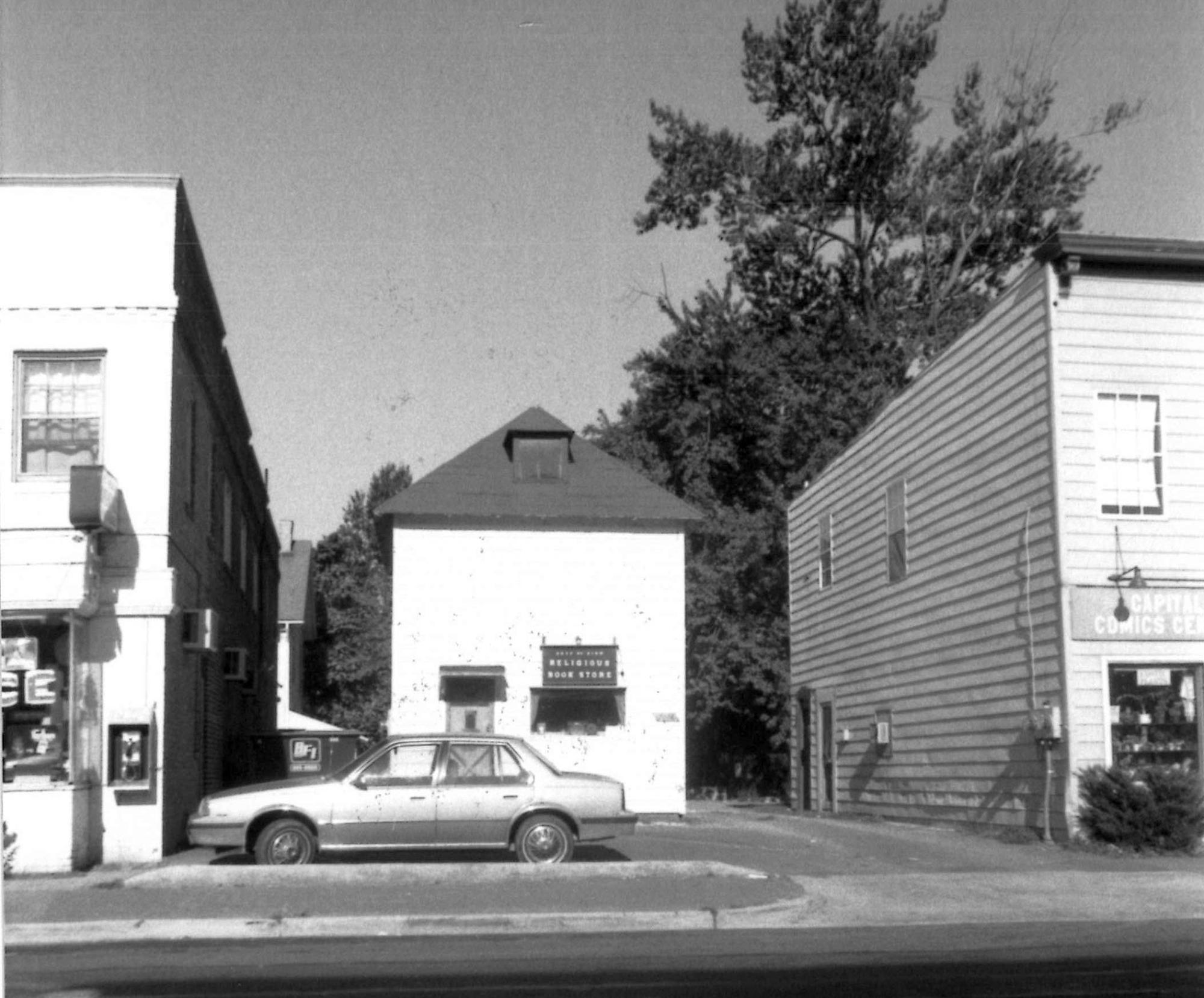Part IV – Glassman Redux (1938-75)

The 1941 fire insurance map. This time the plat includes John Carpenter's house (to the left)., not part of the property Note the new store now in red to indicate brick construction and split down the middle. into two stores Number 2008 is clearly shown as a printing shop and the filling station is indicated in the courtyard. In this year S = store and D = dwelling.
Jacob apparently actually ran the operation initially, for he immediately applied for a building permit, tore down the old wood-frame main store and put up the current two-story brick-face building with two stores side-by-side at the first level separated by a central stairway leading up to apartments above. The front two-thirds of the building sits on a slab and the rear third has a basement below. He did not touch the two smaller buildings on the lot.
From 1940 through 1972 the left-hand half of the building was the Mt Vernon Food Center, a DGS cooperative member that owner Max Rumshin had moved down from the Del Ray/Oxford block of Mt Vernon to take advantage of the new building. The District Grocery Stores was a cooperative of independent grocers who banded together to fight off the chains by combining their purchases. Largely made up of Jewish eastern-European immigrants, such as the Lithuanian-born Rumshin, who served as DGS treasurer during the early 1940s, the venture proved successful for its almost 300 member stores through the 1950s. Indeed, old-timers in Del Ray universally refer to Rumshin's as The DGS Store.
The small ex-Colasanto office in its 1991 incarnation as the Ship of Zion Religious Bookstore. At this point there was a grocery store to its left.

The right half from 1945 to 1974 was “Doc” Carneal's Del Ray Drug Store with a prescription counter, a soda fountain with counter and chairs, a few booths that the older men of the neighborhood favored in the mornings to shoot the breeze, and racks for magazines and sundries.
Through the 1950s the small building at the rear of the lot, 2006 Mt Vernon, had served simply as a storage building. In 1953, however, it was taken over as an office for Stalwart Realty. That lasted only a year or two, but then Nicholas Colasanto, local lawyer, moved his office in there and he remained there until 1967 and even after that as a storage space for his practice and others until 1975. The colorful Nick Colosanto, a unique Italian-American good-ole-boy from Connecticut, was city manager in 1947-49 and served on the city council 1970-79, being widely regarded as Del Ray's unique voice on the council. His obit in the Post tries to do him justice, and actually comes close. The building at the rear may have been small but in its time it was a lexus of wheeling and dealing in Alexandria. It passed through a number of commercial uses until the Neighborhood Restaurant Group incorporated it into the Evening Star restaurant as an auxiliary facility.
The larger building on the north side of the lot served as the base for Critics Publishing, a printing house from about 1931 into the early 1940s. After housing a number of shops and offices it was taken over the Planterium And Comic Book Store in 1977, which remained active until early 2018, a much longer reign than anyone would have expected.
During the era of the wooden single-use store, up to 1938, there was a gasoline pump alongside the building, not uncommon for grocery and dry-goods stores of the time. When the new larger building went up the tanks and pumps were apparently relocated to near the sidewalk in the courtyard, presumably allowing cars to pull in alongside. Unable to compete with the oil company associated stations, these had gone by 1948.
Jacob Glassman passed away in 1942, leaving son David to run the property. David, in turn, died in July 1972, having been in poor health for some time. His widow Margaret sold the property three years later, ending sixty years of the Glassmans at the corner.